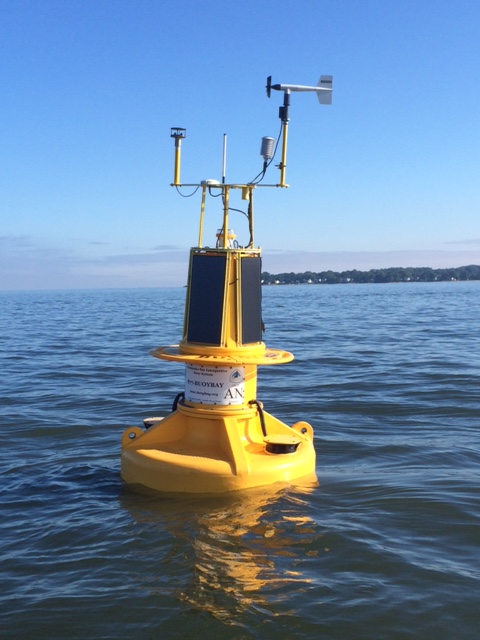Boaters who have frequented the waters near the Annapolis CBIBS buoy over the past few years may have noticed that, this year, the top structure of the buoy now features an additional piece of equipment. What is it, and why is it there?

The traditional anemometer—the “windbird” that is the tallest item on the buoy in this photo—is the sensor that tracks wind speed, gust, and direction on the buoy. The windbird on the Annapolis buoy has, in years past, on occasion registered wind speeds and/or gusts that may be too high or too low.
For example, if a line of thunderstorms were to move through the area, perhaps Patapsco and Gooses Reef buoys would show a gust to 35 knots; Annapolis on occasion would show 50 knots. Certainly not out of the question—but not “matching” well with data from the rest of the storm system.
Similarly, there were instances where the buoy would report “0 knots” of wind speed when there may have been a very light (less than 2 knots) breeze.
To determine whether there were issues with the equipment or with the way the equipment interacts with the computer and software that transmit data from the buoy to users, the CBIBS technical team has installed a second anemometer on the Annapolis buoy as a test—visible in this photo as the sensor on the left of the top structure.
Data from this anemometer—a “solid-state” sensor that observes wind acoustically—is not currently available to the public via the website or other methods, as it is only being used in a “test” mode. The CBIBS team is comparing data from both anemometers after high- and low-wind events. So far, they have been in very close agreement.
The CBIBS technical team will evaluate whether the solid-state anemometer may be a good fit for other CBIBS buoy locations.


